

Learning Landscapes: Designing Outdoor Environments That Inspire
Humans, especially children, are natural explorers. Long before formal classrooms existed, learning happened outdoors through observation, play, and experimentation. Today’s school campuses can rekindle that instinct by intentionally shaping outdoor spaces as integral parts of the learning experience. When designed thoughtfully, these “learning landscapes” become extensions of the classroom nurturing mind, body, and spirit.
EDUCATION
The Mind–Nature Connection
Research in environmental psychology shows that contact with nature supports neurological processes linked to attention restoration, emotional regulation, and stress reduction. Schools that embrace this interplay between the built environment and the brain help students thrive academically and socially. It’s not enough to provide a window view of trees or a fenced-in playground; designers are challenged to weave natural elements into every layer of the campus, from courtyards and rain gardens to shaded study nooks and interactive stormwater features.
Benefits Beyond the Classroom
The purpose of a learning landscape is to create meaningful connections between students and the natural world. These connections foster a sense of place and belonging within the community while triggering physiological responses, like the release of serotonin, that elevate mood and reduce anxiety. Studies consistently show that students who spend more time in green environments demonstrate improved concentration, stronger social bonds, and higher test scores. In short, outdoor learning supports both emotional well-being and measurable academic outcomes.
A Platform for Hands-On Discovery


Outdoor learning environments expand curriculum opportunities and encourage student-led, hands-on projects. Freed from the constraints of walls and furniture, students can conduct messy science experiments, observe seasonal changes, or work collaboratively on art installations inspired by their surroundings. Successful learning landscapes include a variety of spaces and sensory experiences:

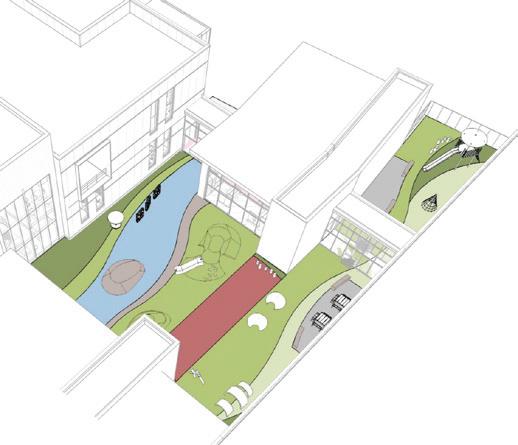
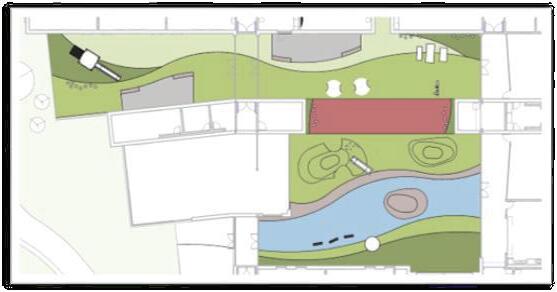
• Exploration zones such as nature trails, pollinator gardens, and small woodland areas.
• Productive spaces like greenhouses, vegetable gardens, and outdoor labs for science or culinary programs.
• Gathering spots such as amphitheaters, outdoor classrooms, and shaded pavilions for lectures or performances.
Variety is essential. When students can choose between quiet versus active, sunny versus shaded, or solitary versus group settings, they feel empowered to tailor the environment to their learning style and daily mood. This autonomy cultivates creativity, selfconfidence, and personal responsibility.
EDUCATION
Design Considerations for Lasting Impact
Creating a thriving learning landscape requires collaboration among educators, architects, landscape designers, and the broader community. Key considerations include:
• Durability and Maintenance: Selecting native plantings and sustainable materials that withstand heavy use and changing seasons.
• Accessibility and Inclusivity: Designing for all abilities, ensuring paths and gathering areas are navigable and comfortable.
• Curricular Integration: Engaging teachers early to align outdoor features with science, art, and environmental education goals.
• Climate Resilience: Incorporating shade, wind breaks, and water management strategies to extend usability throughout the year.
• Security: Blending CPTED principles of natural surveillance, access control and social management to create safe environments conducive to learning.


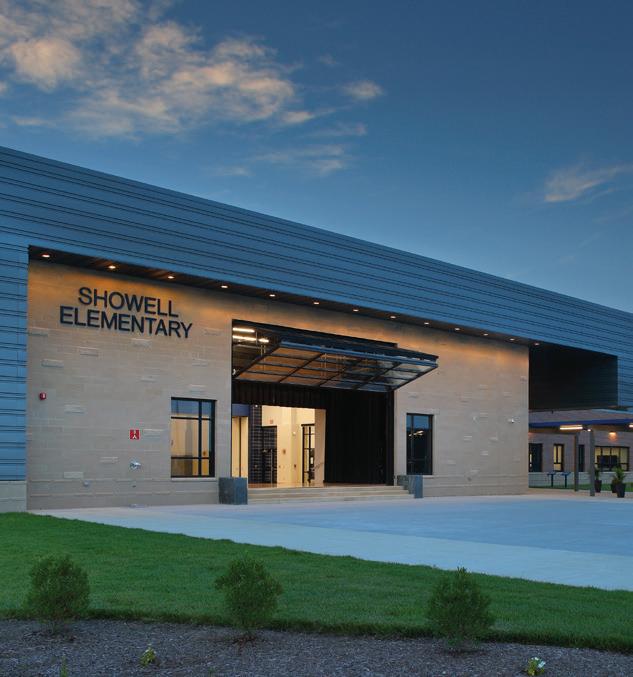
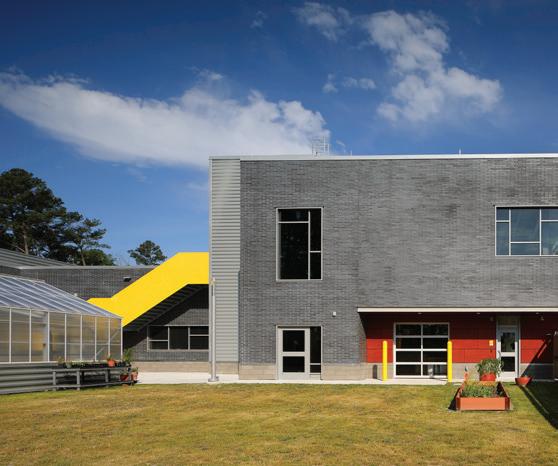

Learning landscapes do more than enhance education; they inspire lifelong environmental stewardship. Students who plant trees, observe wildlife, or test rainwater quality gain firsthand appreciation for natural systems and sustainability. As they grow, these early experiences shape attitudes toward conservation and community involvement.
By merging natural and built environments, schools can create vibrant, flexible landscapes that serve as living classrooms. These spaces invite curiosity, spark discovery, and foster well-being—helping every student forge a lasting connection to the world beyond the walls.
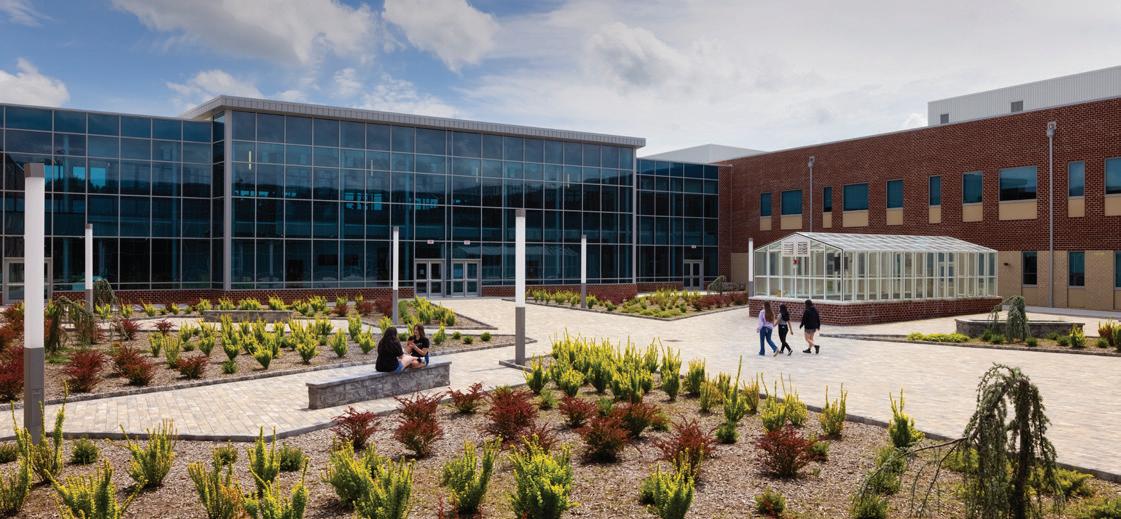
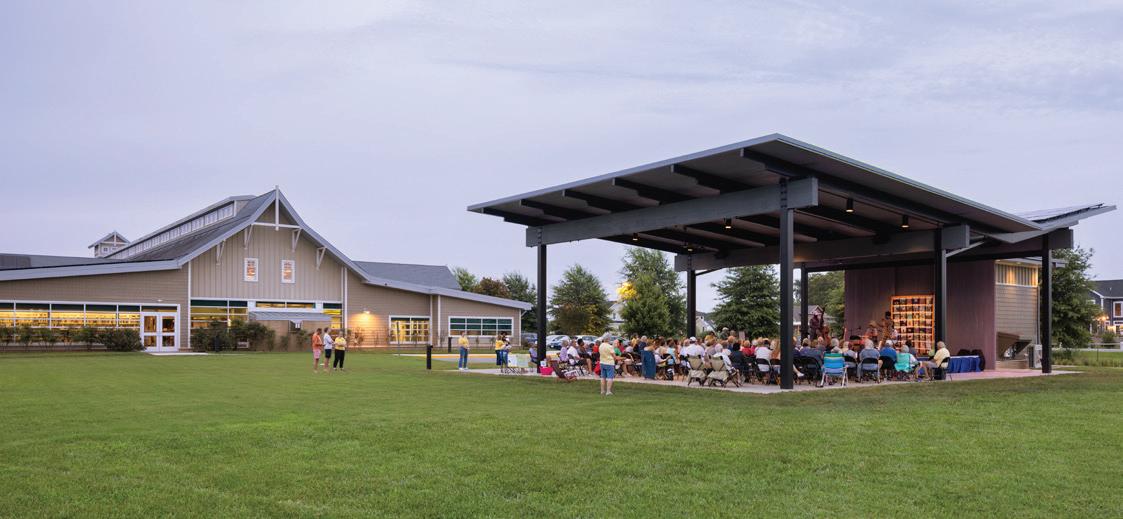
Cultivating the Next Generation of Stewards
